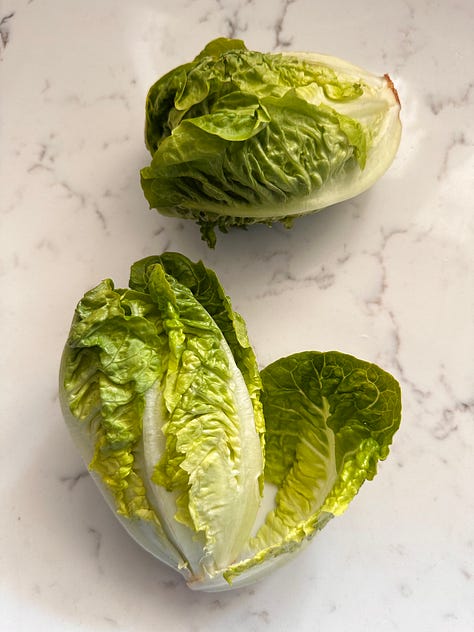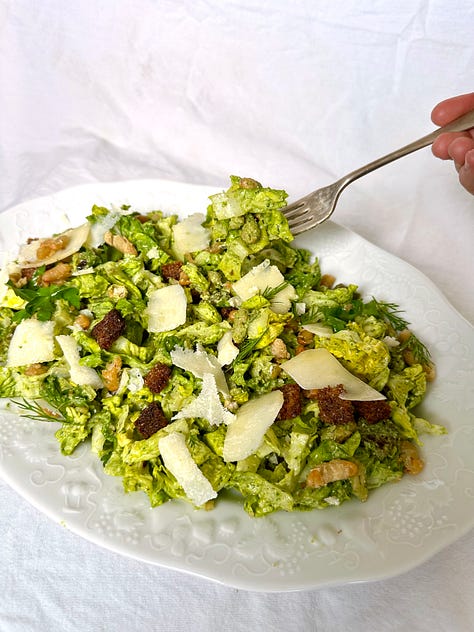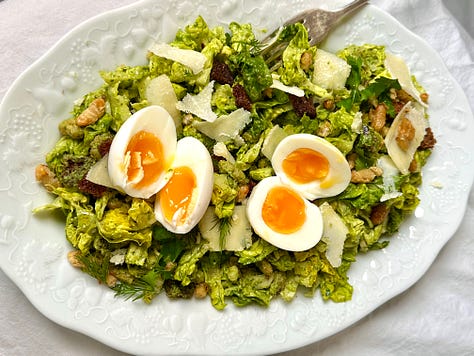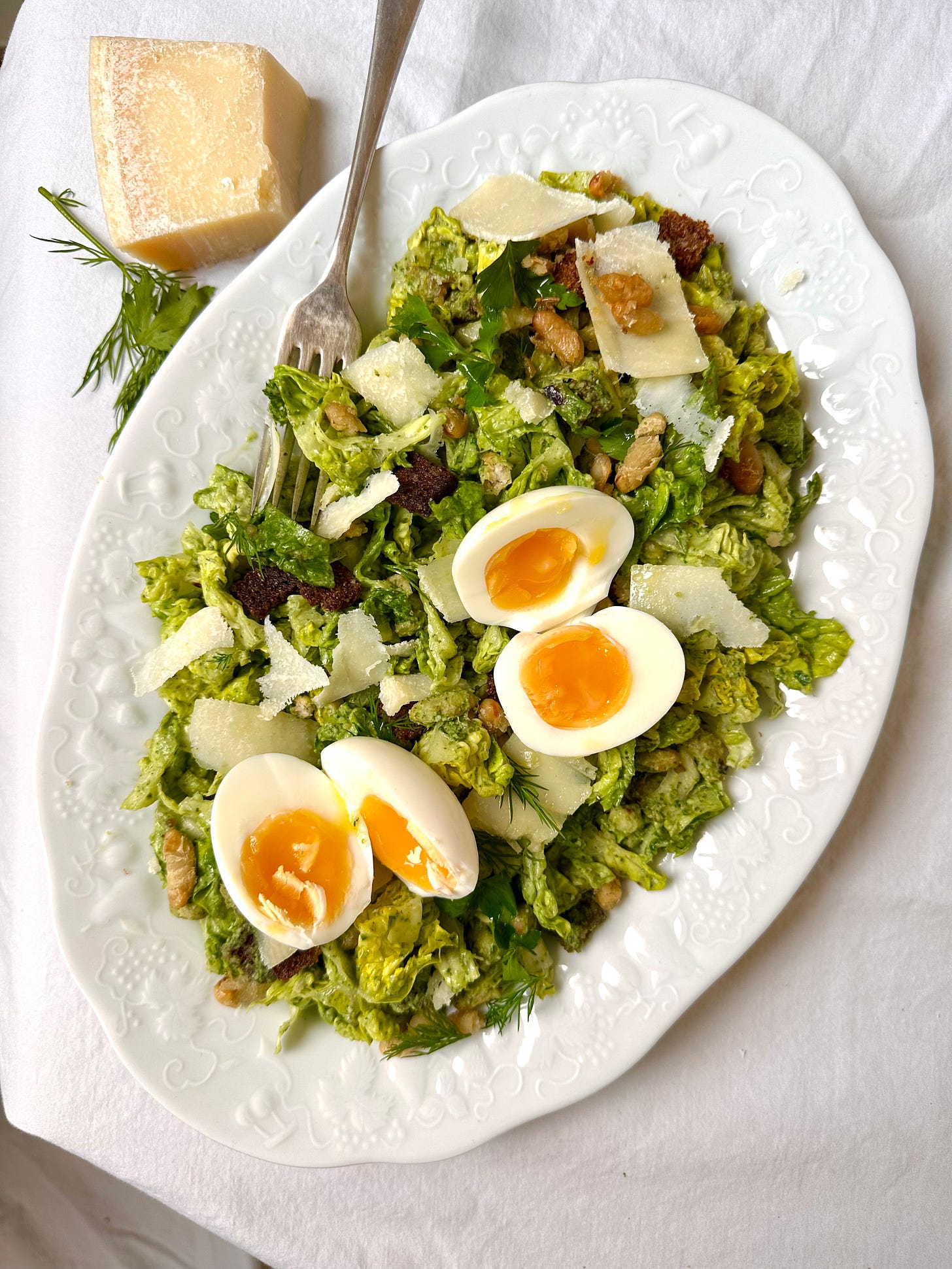HISTORY:
Lettuce is older than I thought. It’s first depicted in an Egyptian tomb dating back to 3000 BC. It’s believed, though, that it was more likely cultivated for oilseed or its white latex, which was believed to be an aphrodisiac and therefore dedicated to the goddess of fertility. It was still cultivated in Ancient Rome where it was always served at the end of a meal, as these ancient cultivars were said to help with sleep. But as they were bred to reduce bitterness, so too were their somniferous properties, and they started to be served at the beginning of meals instead, to open one’s appetite.
Wild lettuce is said to originate in the Middle East but wasn’t introduced to America until the 15th century, by Christopher Columbus of course. See, Europe got potatoes and tomatoes, but America got lettuce so that seems like an even trade…right?
There are now many different cultivars used across the world, the most popular being romaine, butterhead, baby gem (or sucrine, from the French sucre meaning sugar), cos (named after the island in Greece where it was grown during Antiquity), and stem lettuce in China (a variety where the crunchy stem is favoured).
FUN FACTS:
It was the first vegetable grown in space! Astronauts successfully grew red romaine lettuce in space in 2015 which they enjoyed with a classic french dressing. I suppose after a diet of dried food, a crunchy salad might just taste like heaven.
Although Ancient Egyptians believed lettuce to be an aphrodisiac, it seems it acquired the opposite reputation later on. I was very surprised, as learning about vegetable history I have noticed a trend of getting humans to eat their 5-a-day by advertising them as a key to our libido. But lettuce instead was served in the middle ages to monks struggling to abide to their calling and women with naughty desires.
HOW TO COOK:
Raw: Lettuce leaves are a light and crunchy addition to any salad. Just remember, baby gem and iceberg may need a bit more dressing to compensate for their higher water content.
You can also use lettuce leaves as little cups for spiced mince, such as Thai larb or Chinese san choy bow.
Cooked:
Slice baby gems in half and char them in a hot pan, then serve with a warm, mustardy dressing.
Cook the charred lettuce further by braising it with a bit of white wine, white onion and peas. This classic French dish is the perfect way to balance the bitterness of lettuce with the sweetness of onion and peas, while retaining a bit of crunch.
Lettuce pairs well with fatty and creamy elements such as cheeses, peanut butter, yoghurt and crème fraîche; red meats or oily fish, anchovies in particular; sweet elements such as fruit, citrus, melon, peas and onion; other vegetables, especially cucumber, peppers, radishes and carrots; and aromatics such as lemongrass, dill, chives, parsley, coriander, garlic, chilli, honey, fish sauce, miso and soy sauce.
My lettuce recipes:
Green goddess Caesar salad: below for paid subscribers
And plenty more in my spring cookbook: Seasonal Mood Food Vol.3 Spring
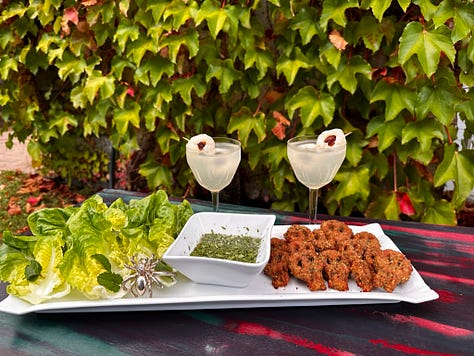
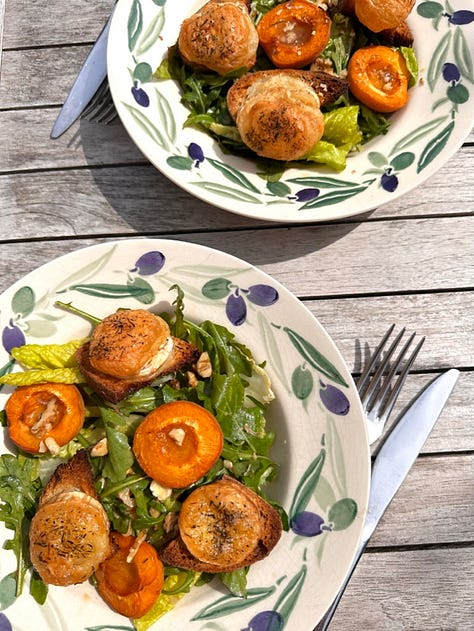
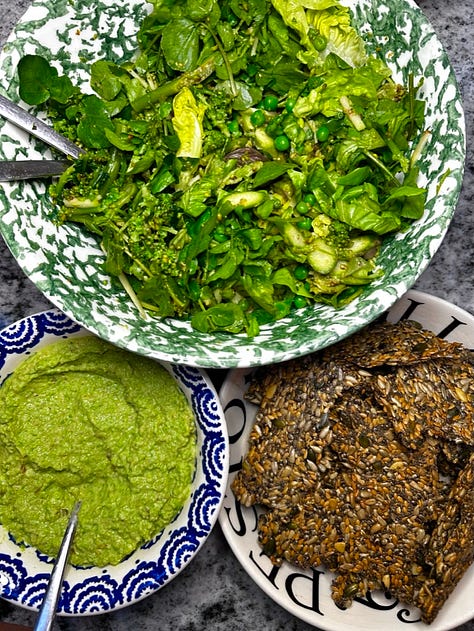

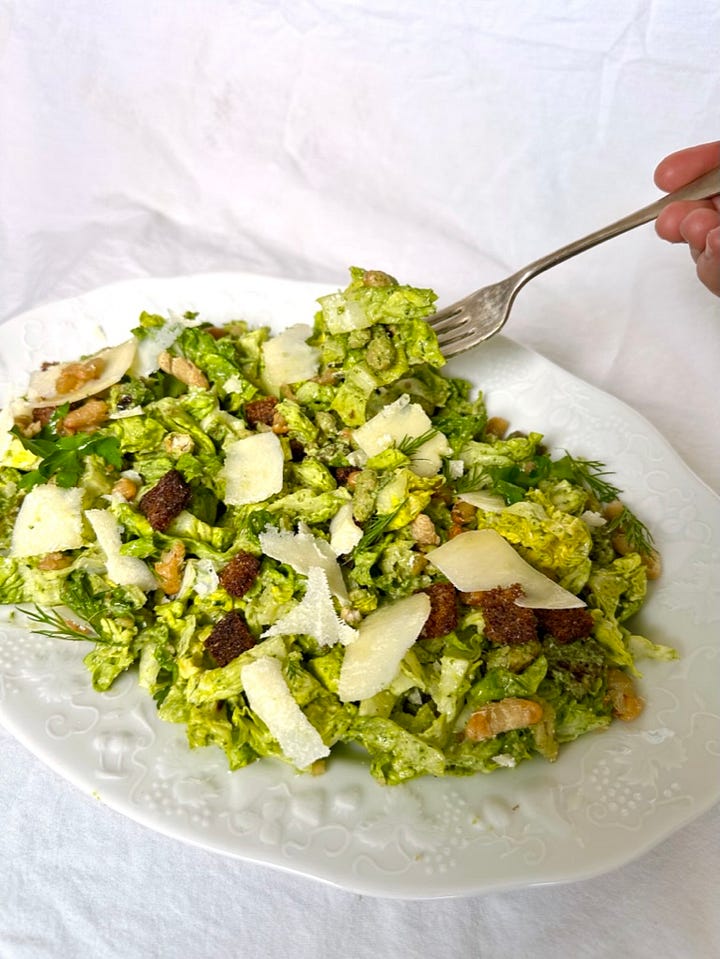
MOOD FOOD - HAPPY:
Vitamin K – Required for the synthesis of sphingolipids, which play an essential role in brain cell function. Recent research has linked sphingolipid health with healthy ageing and a reduced risk of neurodegenerative disorders such as Alzheimer’s and Parkinson’s. Initial studies have also found an inverse relationship between vitamin K levels and depressive symptoms.
Hydration – The high water content of lettuce makes it a great way to stay hydrated, which in turn helps regulate mood by lowering blood pressure and supporting a healthy gut microbiome.
Did you know my paid subscribers also get a recipe each week featuring the spotlight ingredient?
For only £3.99/month, paid subscribers get access to:
A new seasonal recipe every week.
A cook along video for the recipe.
Full access to my archive of newsletters and recipes.
You can unsubscribe in one click.
This week’s recipe for paid subscribers:
Green Goddess Caesar Salad Recipe
My version of a Green Goddess Salad
A delicious cross between green goddess dressing and a vegetarian Caesar salad
Seasonal baby gem lettuce is tossed in a vibrant, herby green goddess dressing, then topped with crispy cannellini beans, golden croutons, shaved parmesan, and soft-boiled eggs. It’s crunchy, creamy, savoury and absolutely perfect for a sunny lunch.
Ingredients (2 portions):
Green goddess dressing recipe:
20g parmesan
20 ml EVOO
1 lemon, juiced
30g herbs (equal part mint, parsley, dill, coriander and basil; or any leafy herb you have on hand)
4 anchovy fillets
2 tbsp tahini
30 mL water
Vegetarian Caesar salad recipe:
2 baby gem lettuces (approx. 220g)
2 eggs
4 spring onions
10g parmesan
2 slices stale bread (I used seeded rye)
1 tin cannellini beans
2 garlic cloves
Sea salt
Black Pepper
EVOO
Method:
Preheat the oven to 180°C.
Drain and rinse the tin of cannellini beans. Dry them slightly using kitchen paper or a clean tea towel.
Slice the stale bread into 1-inch cubes.
Place the beans and bread on a baking sheet, add 2 garlic cloves, plenty of EVOO, salt and black pepper. Mix to coat all the pieces evenly.
Bake for 30 minutes, or until golden brown.
Rinse the spring onions and place them in a frying pan on high heat. Char them for about 2 minutes on both sides, then remove from the heat and slice them thinly.
Add all the Green Goddess dressing ingredients to a food processor, along with the 2 garlic cloves roasted in the oven. Blitz until smooth, and add more water if it’s too thick.
Thinly slice the baby gem lettuces.
Mix all the ingredients in a large salad bowl.
Boil a small saucepan of water, add the eggs and cook for 6 minutes. Rinse them with cold water and remove the shells delicately.
Serve the salad topped with the soft-boiled egg and dig in. Bon appétit!
As always, if you have any questions about method, substitutes etc. feel free to send me a message!
